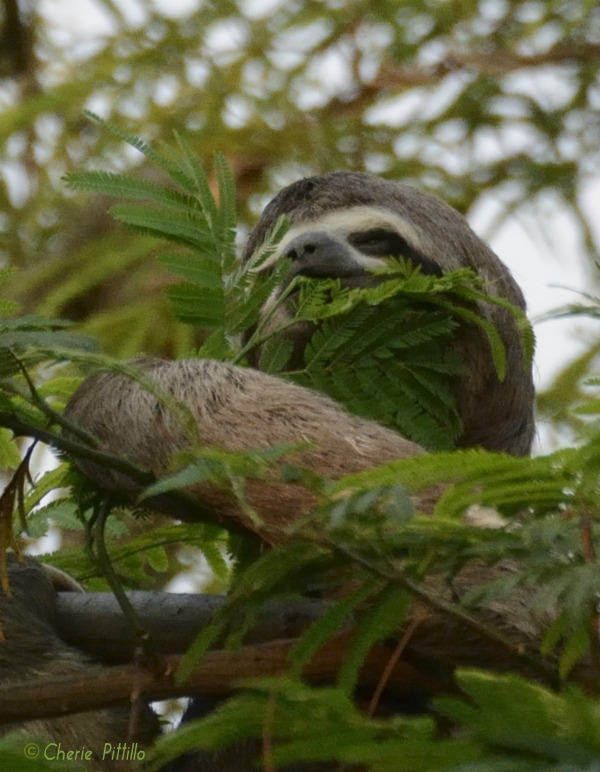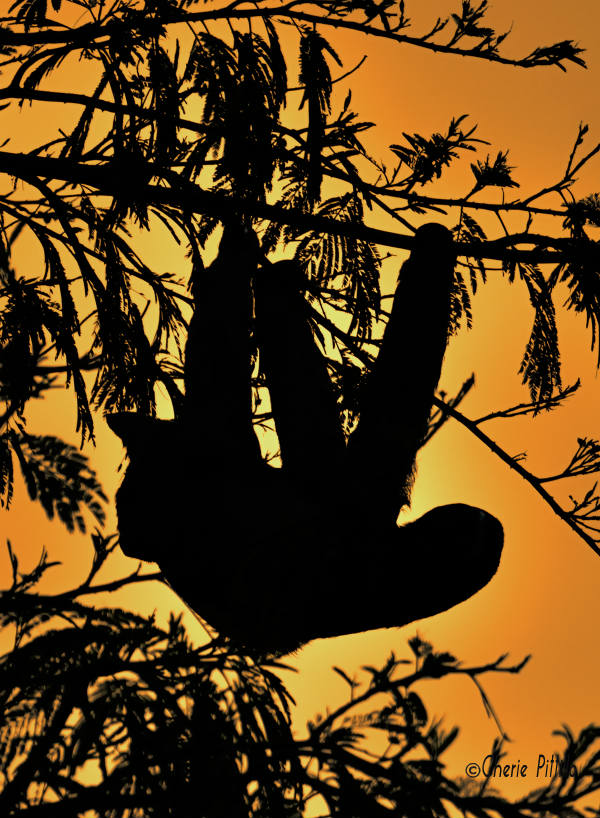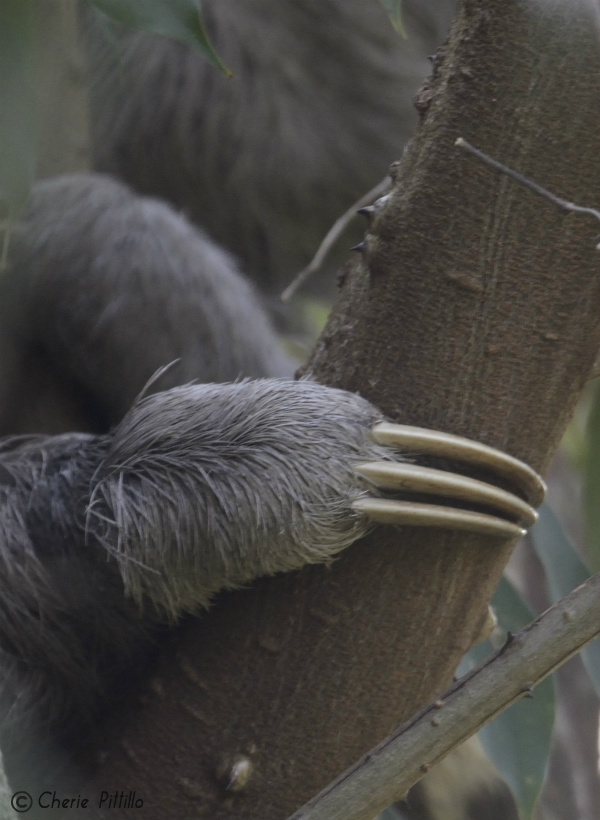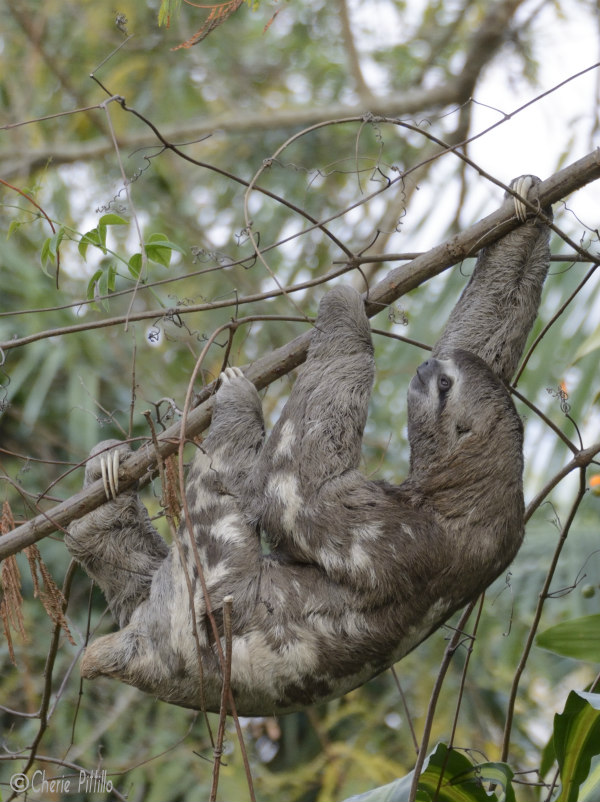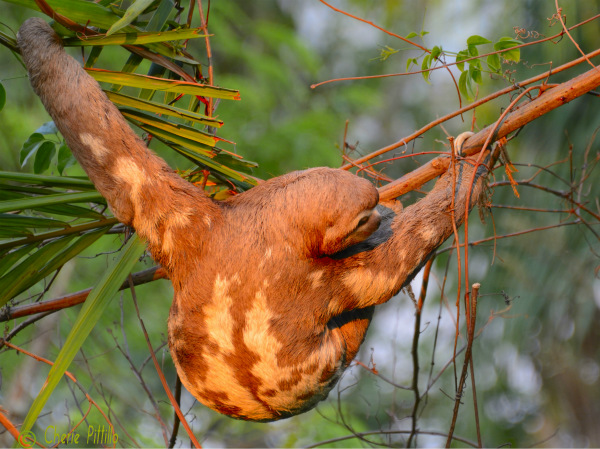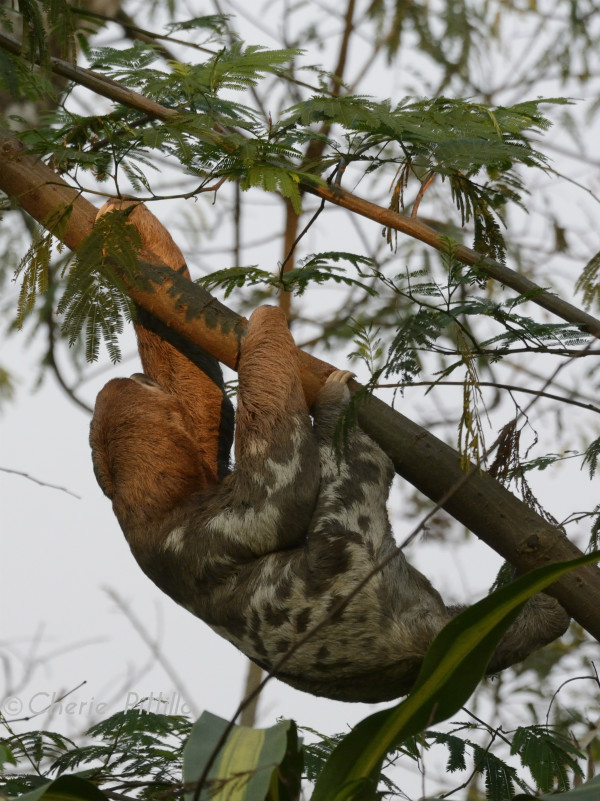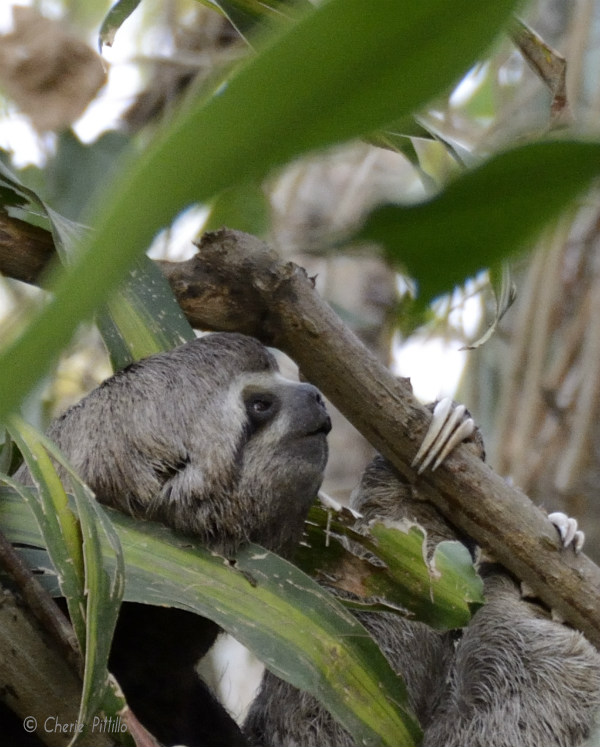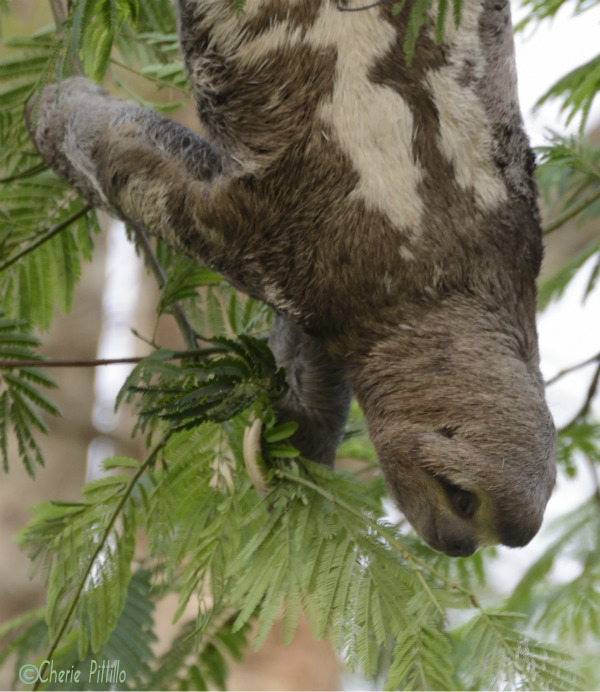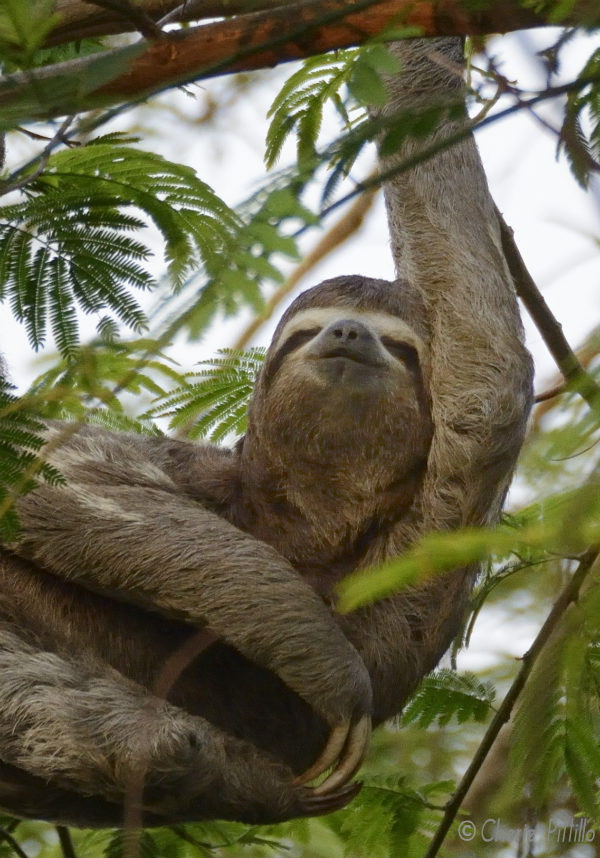Three-toed Sloth, Bradypus variegatus
When I got my first film camera, I wanted to photograph wildlife especially mammals. “Birds” appeared while I waited for the furry critters. Now, I concentrate on birds and photograph mammals secondary.
What a nice surprise to see this thirty inch mammal literally hanging out on a limb before sunset!
This brown-throated three-toed sloth fed on leaves before it rested for the night…and most of the day. A three-toed sloth can sleep or rest 15-18 hours a day, which made it difficult for me to locate one in action. Usually I found a non-moving lump of fur in a tree and couldn’t detect a head or a tail. New evidence suggests the three-toed sloth may sleep and eat on and off throughout the day and night in its rainforest canopy of Central and South America.
Even though this image shows three toes ending in three curved claws of the three-toed sloth, the more mobile two-toed sloth also exhibits three toes! Surprise, surprise. Each hind foot of that species shows three claws while the front feet sport two toes with two curved claws each. Also the two-toed lacks a tail. I only photographed the three-toed.
Hair color of the three-toed sloth shocked me. In late sunshine I thought its fur looked like an orangutan. When it ambled to the shade, the color transformed to nifty shades of gray and brown. By the way, this species can alter its body temperature to fall and rise with ambient temperature. Perhaps when it suns, it serves to warm up its body.
Orange you glad I could share this with you?
Its outer fur contains cracks that permit a one-of-a-kind green algae to grow in it. With greenish outer fur from algae coloration, it provides excellent “under cover” camouflage for this detective. Moth species feed on the algae and a caracara species (bird of prey) appears to feed on the moth without bothering the sloth. Commensalism in action!
Why would I call a three-toed sloth a super sleuth?
And what does it detect?
It locates the specific tree leaves it needs to eat and can feed upside down. Many rainforest leaves are thick, rubbery, hard to digest, and contain toxins. Even with a multi-chambered stomach complete with bacteria, leaf digestion is a slow process for this animal. Supposedly the leaves supply its water needs. Research indicates this species has the slowest metabolic rate of all non-hibernating mammals.
Also it descends to the ground every three to eight days to urinate and defecate. Those scents may function in communication with other sloths. Yes, it may be slow-moving on the ground, but it is an excellent swimmer.
Animals that live in trees and eat leaves are called folivores. I know I became a “folly for” this sloth when it seemed to enjoy scratching for several minutes.
DON’T BE SLOVENLY: DISCOVER THE WONDERS OF NATURE AT YOUR OWN SPEED
DISCLAIMER: References do not agree on details about this species.
http://news.bbc.co.uk/earth/hi/earth_news/newsid_8498000/8498058.stm
http://eol.org/pages/328518/details#behavior”
A Field Guide to the Mammals of Central America and Southeast Mexico
Cherie Pittillo, “nature inspired,” photographer and author, explores nature everywhere she goes. She’s identified 56 bird species in her Merida, Yucatan backyard view. Her column, published on the 7th and 21st of each month, features anecdotes about birding in Merida, Yucatan and beyond. Contact: [email protected] All rights reserved, ©Cherie Pittillo

